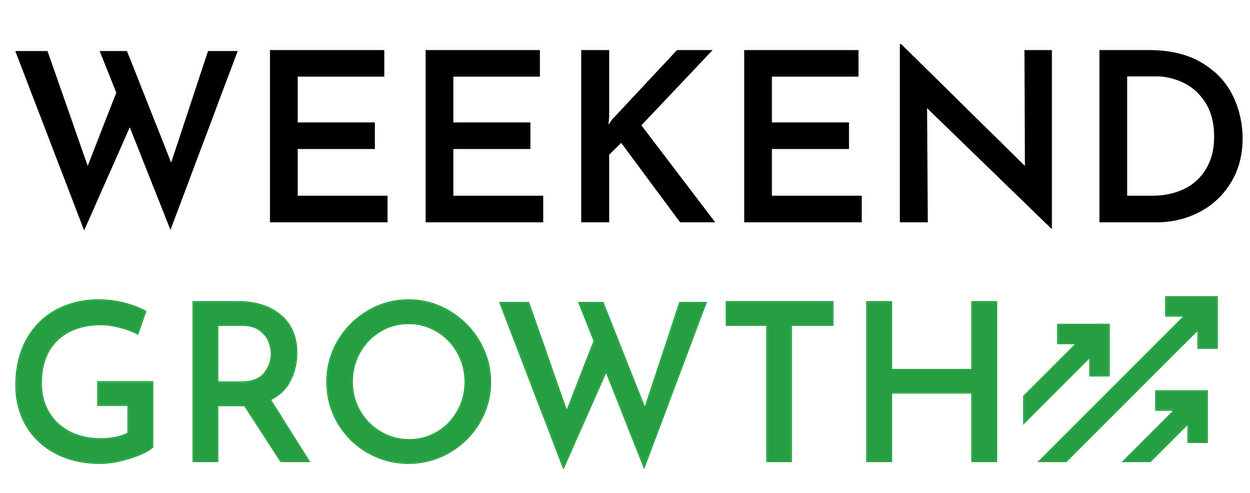Last time, I wrote a tutorial on how to use ChatGPT to help you with topical research for updating your content. It was a simple process to follow that only takes a few minutes, and it will help you brainstorm the topics your article is missing.
And I was clear to point out… topical research is only ONE part of updating content. In reality, there is a whole lot more to updating content.
Let’s talk about how to update content at scale. My walk-through won’t make it simpler (per se), but it will give you a framework. And I would argue that is more important than simple.
Spoiler alert – I went through this whole process in my recent interview on the Click Wars podcast with Jamie I.F. and Sammie Ellard-King. You can watch it here, or read my detailed breakdown below.
Quick Navigation
You Need to Start with the Process
The most important thing you can do is to nail your process. This is especially important for a complicated process like updating content.
I said it last time- creating new content is easy in comparison to updating content, mainly because the process is so much simpler.

The more complicated the process, the more important your process becomes. Michael Gerber, author of the incredibly popular book “The E-Myth”, devotes a lot of time talking about this.
Gerber describes the concept of the “Turnkey Revolution,” which is the idea that businesses should be designed as if they were to be replicated as franchises, even if there is no intention to actually franchise. This means creating systems that allow for consistent operations, quality control, and scalability.
If you’re anything like me when I first started updating content, you’re all over the map in terms of what you do. Sometimes, you focus on updating introductions; other times, you look to add unique graphics, or maybe you’re on an FAQ kick.
Oftentimes, we’re swayed by what we’ve recently read or seen. Or, we opt for what is easiest or what we feel like doing in the moment.
You have to break from that and define your process. Maybe not every article will need every part of your process. But every article update has to follow a specific process.
Need help understanding exactly what your website needs to grow? I offer Website Reviews that might be just what you need. See the 5-star reviews from dozens of site owners!
My Agency’s Content Update Process
So, you definitely don’t have to follow our process, but here it is from a high level:
- Build Out Asana Task
- Topical Expertise
- Keyword Research
- Topical & SERP Research
- Outline Creation
- Write Updates
- Create Images and Graphics
- Fact Check Article
- Edit Article
It’s a 9-step process of sorts. It encompasses (from a high level) the different elements we think are vital to updating a piece of content.
Last week, I covered one way to do Topical Research. There are many others as well.
Part One
I highly recommend using software to set up, track, and execute your process. Yes, it’s possible to do with email, Slack, Google Sheets, etc. But these software tools that are specifically designed
- Build Out Asana Task: The point here is to use software to help you track progress. You can take your process and create project management around it using a tool like Asana, Trello, Notion, etc.
Part Two
It’s information-collection time. You need to go find all of the relevant information you can that your article does not include.
- Topical Expertise: I want input on my articles from experts that have evidential proof in Google’s index. I want to quote them when possible, and also use them to vet the overall content’s expertise.
- Keyword Research: What keywords (topics) am I missing? I love using Google Search Console (GSC) for this – that’s a whole other post.
- Topical & SERP Research: We discussed this last week! But, don’t just stop at AI. Look towards other mediums like Reddit, Quora, YouTube, etc.

Be careful here and ensure that you are also collecting information that is new to the subject. Long gone are the days of just making our articles “longer,” including everything that others include, and expecting to rank better. That worked, don’t get me wrong.
But Google wants to see new information. Many call this “information gain.” I’m pretty obsessed about this topic, so I’ll probably devote an entire future post to that. But, in the meantime, look it up and make sure your article updates have this.
Part Three
Ok, you’ve got everything that needs to go into your updated article, now it’s time to work this in! Easier said than done. This part is annoyingly laborious and surprisingly more complex than it feels like it should be.
- Outline Creation: With all of the “ideas” on the table, you now need to organize them all. This is complicated because you also have to work with your current article. Sometimes, it’s easy to “add” these topics, but sometimes, you have to reorganize the whole thing.
- Write Updates: Good old fashioned writing to fill in the gaps, whether you use an AI tool like Koala or handwrite everything yourself.
- Create Images and Graphics: You know how big of a fan I am of using your own images, but don’t sleep on helpful graphics.
- Fact Check Article: So important! We just saw how frustrated Danny Sullivan got (Google’s Search Liaison) when an updated article wasn’t accurate!
- Edit Article: Finally, we always have an editor review grammar, punctuation, structure, readability, etc.
- Publish Article: Someone has to take all of this and re-publish the article. Not a tough task but obviously really important.
And there you have it. From a high level, that’s the process we use at 201 Creative to update an article.
How to Get Help with Content Updates
Unfortunately, for the vast majority of site owners, this level of depth is time prohibitive. It’s really involved, takes a lot of time, and doesn’t leave much room for other necessary tactics (new content, links/PR, technical work, etc).
That’s where you have to break each task down, and understand what type of role is needed to execute on it. This can help you break your time out and get help in key areas.
At 201 Creative, the roles within a content update process are divided into three distinct levels: Operators, Decision Makers, and Experts. Each role has specific responsibilities and expertise levels, contributing differently to the project’s success. Here’s a detailed overview of each:
Operators
- Role and Responsibilities: Operators are responsible for executing specific, process-driven tasks. An example given is creating a table for an article to improve its utility for readers, suggesting that operators follow a predefined process to complete their tasks efficiently.
- Skills and Capabilities: They have the ability to follow instructions and implement actions based on a set process or guideline. Their tasks are more tactical and don’t generally require high-level decision-making or expert knowledge.
- Examples of Tasks: Creating comparison tables, publishing content, conducting research, graphic designing, and other operational tasks that support content updates and enhancements.

Decision Makers
- Role and Responsibilities: Decision Makers act like mid-level management and are tasked with making informed decisions based on a set of information and historical data. They are capable of evaluating options and deciding the best course of action, such as determining the necessity to remove or add content during updates.
- Skills and Capabilities: They possess the analytical skills to assess situations, review historical actions, and consult with other team members (like SEO specialists) to ensure decisions align with strategic goals. Decision Makers have a deeper understanding of the project goals and are empowered to make calls that affect the project’s direction.
- Examples of Tasks: Deciding whether to add or remove content from an article, consulting with SEO teams to ensure content updates align with SEO strategies, and making management-level decisions about content direction.
Experts
- Role and Responsibilities: Experts bring specialized knowledge and insights to the project, offering unique value through their experience and perspective. They contribute content or insights that require a deep understanding of a subject matter, which general operators or the project lead might not possess.
- Skills and Capabilities: Experts have specialized knowledge or skills in a particular area, making them capable of providing unique insights, advice, or content. Their contribution is critical for ensuring the content’s accuracy, depth, and value to the audience.
- Examples of Tasks: Providing expert insights to enhance content quality, contributing specialized content or analysis, and ensuring content accuracy and authority on complex subjects.
Decision Makers serve as a bridge between the operational execution by Operators and the high-level expertise provided by Experts, ensuring that content not only meets quality standards but also aligns with the site’s goals and SEO strategies.
Fitting Yourself Into the Process
You can insert yourself into this process. Here are a few scenarios that I find are common for site owners:
- Project Manager or SEO Expert: If you’re in a position where you’re responsible for the overall strategy and execution of content updates, including SEO considerations, you might identify as a specific Decision Maker. This role involves making strategic decisions about what content needs updating, how to update it, and ensuring that the updates align with SEO best practices and the overall content strategy.
- Brand Owner: As a brand owner, you inherently become a Decision Maker because you have a vested interest in the direction and quality of the content. But, this might not be as it relates to the SEO portion of the update, but rather the brand’s voice in the update. You decide on the topics covered, the tone of the content, and how it aligns with your brand’s values and goals. You might also make decisions about incorporating or excluding certain elements (like FAQs) based on your understanding of the brand and its audience.
- Content Specialist: If your expertise lies in content creation, strategy, or analysis, you might find yourself in a Decision Maker role when it comes to determining the scope of content updates, the approach to take for different pieces of content, and how to best convey the intended message or information to the audience.
I’ve come to understand that you can play multiple roles depending on your skills, the size of your team, and the specific requirements of the content update process.
This really emphasizes the fluidity of roles in smaller teams or when you’re operating solo. You might switch between being a Decision Maker, an Operator, or even an Expert based on the task at hand.
This flexibility is crucial for you to ensure that each aspect of content creation and update is handled with the appropriate level of expertise and oversight.
Wrapping Up
For added insights, make sure to watch my interview with the Click Wars podcast on this topic!
It’s normal to be a bit overwhelmed by all that goes into updating content. Our SOP internally for this process is over 65 pages long…
If you want help, that is exactly what 201 Creative can help with.
You can learn more about our Content Updating service here. And, if you want more details about how it applies to your specific website, just reach out!

